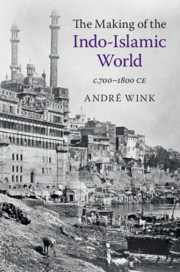Book contents
- Frontmatter
- Contents
- Figures
- Preface
- Abbreviations
- Introduction
- 1 Prehistoric and Ancient Antecedents
- 2 The Expansion of Agriculture and Settled Society
- 3 Geography and the World-Historical Context
- 4 Medieval India and the Rise of Islam
- 5 From the Mongols to the Great Mughals
- 6 The Empire of the Great Mughals and Its Indian Foundations
- 7 The Indian Ocean in the Age of the Estado da India and the East India Companies
- Epilogue
- Glossary
- Notes
- Suggested Reading
- Index
7 - The Indian Ocean in the Age of the Estado da India and the East India Companies
Published online by Cambridge University Press: 17 July 2020
- Frontmatter
- Contents
- Figures
- Preface
- Abbreviations
- Introduction
- 1 Prehistoric and Ancient Antecedents
- 2 The Expansion of Agriculture and Settled Society
- 3 Geography and the World-Historical Context
- 4 Medieval India and the Rise of Islam
- 5 From the Mongols to the Great Mughals
- 6 The Empire of the Great Mughals and Its Indian Foundations
- 7 The Indian Ocean in the Age of the Estado da India and the East India Companies
- Epilogue
- Glossary
- Notes
- Suggested Reading
- Index
Summary
This chapter charts the major changes in trading and navigation patterns in the Indian Ocean as well as the concurrent shifts of political power in the sixteenth to eighteenth centuries that ultimately led to the closing of the maritime frontier. Recognizing the importance of new developments in naval warfare associated with artillery and other innovations introduced by the Portuguese and the Dutch, English, and French East India Companies, this chapter argues that the maritime frontier remained an open frontier, like the nomadic frontier, in the sixteenth and seventeenth centuries, but that it closed in the eighteenth century. What happened in these centuries is by no means a simple story of Indo-Muslim trade not being able to compete with European trade, or being overwhelmed by superior European naval force. For two more centuries, Indian Ocean trade flourished and expanded significantly in most parts of the Indian Ocean. The ultimate closing of the maritime frontier in the eighteenth century, and as early as the final two decades of the seventeenth in Java, resulted from the interplay of many different factors.
- Type
- Chapter
- Information
- The Making of the Indo-Islamic Worldc.700–1800 CE, pp. 217 - 247Publisher: Cambridge University PressPrint publication year: 2020



